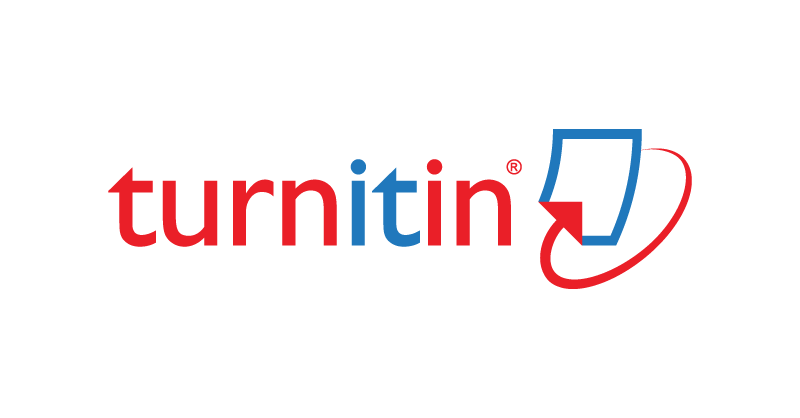Supply Chain Risk Mitigation for Logistics Service Companies
DOI:
https://doi.org/10.32734/jsti.v25i2.11402Keywords:
Risk, Supply Chain, Pandemic Covid-19, MitigationAbstract
The increasing use of expedition services due to the Covid-19 pandemic has also increased various types of risks in companies. This study discusses solutions to the complexity of supply chain management in the expedition services industry due to pandemic Covid-19. This study aims to analyze the risk of security management systems based on every activity in the supply chain of an expedition company. The method used in this study is the matrix risk assessment to determine the risk ranking by multiplying the possibilities and consequence values. Descriptive analysis approaches and in-depth interviews are needed to identify the types of risks in the supply chain of PT.X. The application of risk assessment consists of five stages: development mapping of supply chains, risk identification, risk assessment, risk response development, and risk response control. The results of this study indicate that three types of extreme risks need to be handled in priorities by providing proposed mitigation, namely bad weather, road accidents, and damaged items. Risk mitigation strategies are carried out to prevent the types of extreme risks in the company.
Downloads
References
Y. Wang, S. W. Wallace, B. Shen, and T. Choi, “Service supply chain management: A review of operational models,†European Journal of Operational Research, vol. 247, No. 3, pp. 685-698. 2015. DOI: https://doi.org/10.1016/j.ejor.2015.05.053
D. A. Febriana, and R. S Alimbudiono, “Analisis dan Pembahasan Penerapan Risk Management Untuk Meminimalisir Kerugian Kegiatan Pengiriman pada PT. DIVA Semesta Transindo di Bidang Jasa Ekspedisi di Surabaya,†CALYPTRA, vol. 7, no. 2, pp. 463-475. 2019.
S. Véronneau, and J. Roy, “Global service supply chains: An empirical study of current practices and challenges of a cruise line corporation,†Tourism Management, vol. 30, no. 1, pp. 128-139. 2009. DOI: https://doi.org/10.1016/j.tourman.2008.05.008
S. Meilinda, and I. N. Sutapa, “Analisis Risiko Keamanan Rantai Pasok di Perusahaan Jasa Ekspedisi Sebagai Dasar Penerapan ISO 28000,†Jurnal Titra, vol. 7, no. 2, pp. 201-206. 2019.
L. Biao, W. Liang, and L. Liang, “Multi-agent-based research on tourism supply chain risk management,†Journal of Advanced Manufacturing Systems, vol. 13, no. 03, pp. 133-153. 2014. DOI: https://doi.org/10.1142/S0219686714500097
Y. Kyrylov, V. Hranovska, V. Boiko, A. Kwilinski, and L. Boiko, “International tourism development in the context of increasing globalization risks: On the example of Ukraine’s integration into the global tourism industryâ€. Journal of Risk and Financial Management, vol. 13, no. 12, pp. 303. 2020
T. González-Torres, J. L. RodrÃguez-Sánchez, and E. Pelechano-Barahona, “Managing relationships in the Tourism Supply Chain to overcome epidemic outbreaks: The case of COVID-19 and the hospitality industry in Spain,†International journal of hospitality management, vol. 92, no. 102733. 2021. DOI: https://doi.org/10.1016/j.ijhm.2020.102733
C. Y Wong, and N. Karia, “Explaining the competitive advantage of logistics service providers: a resource-based view approachâ€, International Journal of Production Economics, Vol. 128 no. 1, pp. 51-67. 2010. DOI: https://doi.org/10.1016/j.ijpe.2009.08.026
R. Leuschner, C. R. Carter, T. J. Goldsby, and Z. S. Rogers, “Third-party logistics: a meta- analytic review and investigation of its impact on performanceâ€, Journal of Supply Chain Management, Vol. 50 no. 1, pp. 21-43. 2014. DOI: https://doi.org/10.1111/jscm.12046
L. N. Rahman, and W. Wahyudin, “Optimalisasi Penugasan Karyawan Jasa Ekspedisi Menggunakan Metode Hungarian (Studi Kasus CV. Anteraja Cabang Mekarmukti),†Jurnal Serambi Engineering, vol. 6, no. 3. 2021.
A. M. Nuris, A. Maharani, and R. N. Rachmadita, “Analisis Risiko Proyek Pengembangan Perangkat Lunak Menggunakan Kerangka Kerja ISO 31000,†Jurnal Metris, vol. 22, no. 02, 73-81. 2021. DOI: https://doi.org/10.25170/metris.v22i02.2800
N. N. Pujaningsih, “Penerapan Kebijakan Pembatasan Kegiatan Masyarakat (PKM) dalam Penanggulangan Wabah Covid-19 di Kota Denpasar,†Moderat: Jurnal Ilmiah Ilmu Pemerintahan, vol. 6, no. 3, pp. 458-470. 2020. DOI: http://dx.doi.org/10.25157/moderat.v6i3.3537
Ministry of Transportation Agency, 2021,†Jasa Logistik Melesat di Era E-Commerceâ€. Accessed: Nov. 18, 2022 [Online] Available: https://www.kominfo.go.id/index.php/content/detail/6707/Jasa+Logistik+Melesat+di+Era+e-Commerce+/0/sorotan_media
B. Gammelgaard, “Editorial: the qualitative case studyâ€, The International Journal of Logistics Management, Vol. 28 no. 4, pp. 910-913. 2017
A. Dolgui, and D. Ivanov, “Ripple effect and supply chain disruption management: new trends and research directionsâ€, International Journal of Production Research, Vol. 59 no. 1, pp. 102-109. 2021. DOI: https://doi.org/10.1080/00207543.2021.1840148
N. O. Hohenstein, “Supply chain risk management in the COVID-19 pandemic: strategies and empirical lessons for improving global logistics service providers’ performance,†The International Journal of Logistics Management. 2022. DOI: https://doi.org/10.1108/IJLM-02-2021-0109
F. Ahmadimanesh, M. M. Paydar, and E. Asadi-Gangraj, “Designing a mathematical model for dental tourism supply chainâ€. Tourism management, vol. 75, pp. 404 - 417. 2019. DOI: https://doi.org/10.1016/j.tourman.2019.06.001
A. Tawaka, and T. Harihayati, “Supply Chain Management Di PT. Multi Instrumentasi,†2018. (Doctoral dissertation, Universitas Komputer Indonesia).
Y. Sedyoningsih, and T. Sariwulan, “Meningkatkan Kinerja Perusahaan Melalui Kapabilitas Organisasi, Strategi Supply Chain Management Dan Strategi Human Resource Managementâ€. Economy Deposit Journal (E-DJ), vol 4, no. 1, pp. 232-240. 2022.
I. K. Sriwana, B. Santosa, W. Tripiawan, and N. F. Maulanisa, “Analisis Nilai Tambah Untuk Meningkatkan Keberlanjutan Rantai Pasok Agroindustri Kopi Menggunakan Hayami,†JISI: Jurnal Integrasi Sistem Industri, vol. 9, no. 2, pp. 113-122. 2022. DOI: https://doi.org/10.24853/jisi.9.2.113-122
R. Susanto, “Model Supply Chain Management untuk Distribusi Produk Paper Roll di PT. XYZ,†In Prosiding Seminar Nasional Komputer dan Informatika. 2017.
A. T. Özden, and E. Celik, “Analyzing the service quality priorities in cargo transportation before and during the Covid-19 outbreak,†Transport Policy, vol. 108, pp. 34-46. 2021. DOI: https://doi.org/10.1016/j.tranpol.2021.04.025
S. Sakhuja, V. Jain, and S. Kumar, “Service supply chain: potential, challenges, and future research directionsâ€. Working paper, Indian Institute of Technology, 2012.
T. P. L. Bulan, “Pengaruh kualitas pelayanan dan harga terhadap loyalitas konsumen pada PT. Tiki Jalur Nugraha Ekakurir Agen Kota Langsa. Jurnal Manajemen dan Keuangan,†vol. 5, no. 2, pp. 592-602. 2016.
I. K. Sriwana, Y. Arkeman, D. Syah, and Marimin, “Sustainability improvement in cacao supply chain agro-industry,†World Review of Science, Technology and Sustainable Development, vol 13, no. 3, pp. 256-275. 2017. DOI: https://doi.org/10.1504/WRSTSD.2017.087154
I. K. Sriwana, A. Suwandi, and R. Rasjidin, “Pengukuran Kinerja Rantai Pasok Menggunakan Supply Chain Operations Reference (SCOR) Di UD. Ananda,†JISI: Jurnal Integrasi Sistem Industri, vol. 8, no. 2, pp. 13-24. 2021. DOI: https://doi.org/10.24853/jisi.8.2.13-24
I. K. Sriwana, and N. Erni, “Supply chain analysis of cassava agroindustry to improve national food security,†Industrial Engineering and Management, pp. 1-7. 2015.
F. Achmad, I. K. Sriwana, I. K., Y. Prambudia, and A. A. Rumanti, “Tourism Industry Supply Chain through Stakeholder Participants: Facing Environment Uncertainty of Post Pandemic Covid-19. Jurnal Metris, vol. 24, no. 01. 2023.
J. Jenlina, “Desain Risk Management untuk Rantai Pasok PT. X,†Calyptra, vol. 2, no. 2, pp. 1-19. 2014.
Standart Australia Licence, “AS/NZS 4360: 1999 Risk Management,â€. Standart Australia. 1999.
O. A. Koreawan, and M. Basuki, “Identifikasi Bahaya Bekerja Dengan Pendekatan Hazard Identification Risk Assessment and Risk Control (Hirarc) Di PT. Prima Alloy Steel Universal,†Prosiding SENIATI, pp. 161-165. 2019. DOI: https://doi.org/10.36040/seniati.v5i1.421
S. Daya, S. Fau, and T. P. Damanik, “Analisis Risiko Operasional Dengan Pendekatan Metode Erm Pada JNE Telukdalam,†Program Studi Manajemen Sekolah Tinggi Ilmu Ekonomi Nias Selatan Telukdalam. 2019.
I. Manuj, and J. T. Mentzer, “Global supply chain risk management,†Journal of business logistics, vol. 29, no. 1, pp. 133-155. 2008. DOI: https://doi.org/10.1002/j.2158-1592.2008.tb00072.x
F. Achmad, I. T. Abdillah, and H. Amani, “Decision-Making Process for Tourism Potential Segmentation,†International Journal of Innovation in Enterprise System, vol. 7, no. 01, pp. 19-30. 2023. DOI: https://doi.org/https://doi.org/10.25124/ijies.v7i01.204
H. Zhi, “Risk management for overseas construction projects,†International journal of project management, vol. 13, no. 4, pp. 231-237. 1995. DOI: https://doi.org/10.1016/0263-7863(95)00015-I
F. Achmad, M. Y. Lubis, and Y. Nugrahaini, “Proposed Design of Sewing Process Improvement to Minimize Polyester Technical Sportswear Product Defect at PT. X Based on The DMAIC Method Approach,†Jurnal Sistem Teknik Industri, vol. 25, no. 1, pp. 25-40. 2023. DOI: https://doi.org/10.32734/jsti.v25i1.9204
Downloads
Published
How to Cite
Issue
Section
License
Copyright (c) 2023 TALENTA Publisher Universitas Sumatera Utara

This work is licensed under a Creative Commons Attribution-ShareAlike 4.0 International License.
The Authors submitting a manuscript do so on the understanding that if accepted for publication, the copyright of the article shall be assigned to TALENTA Publisher Universitas Sumatera Utara as the publisher of the journal.
Copyright encompasses the rights to reproduce and deliver the article in all forms and media. The reproduction of any part of this journal, its storage in databases, and its transmission by any form or medium will be allowed.



















